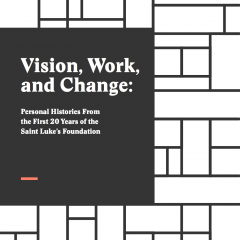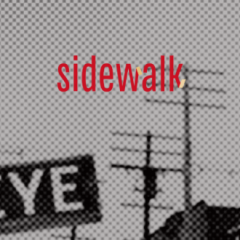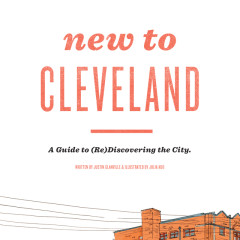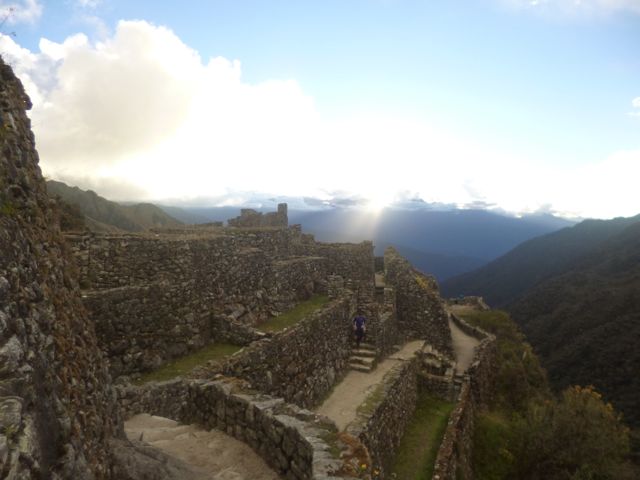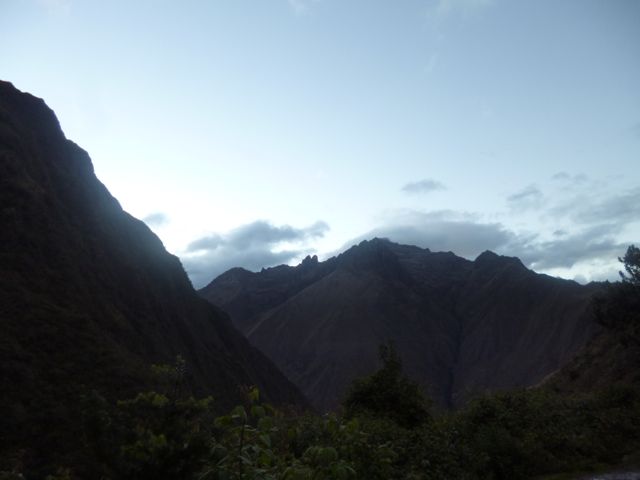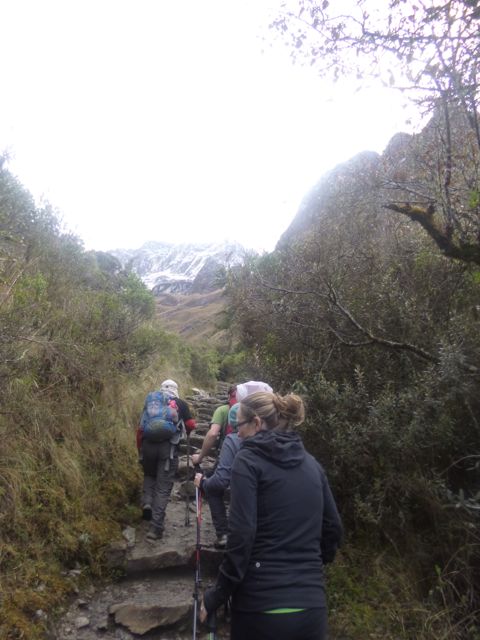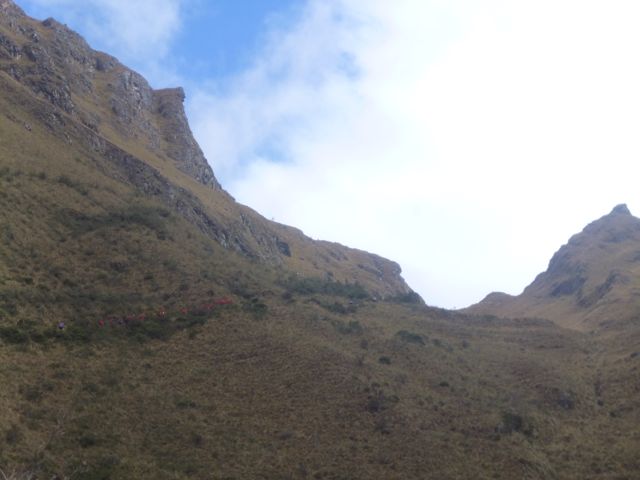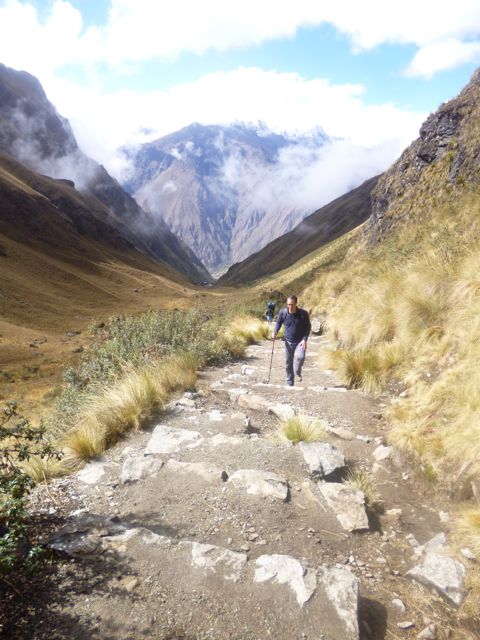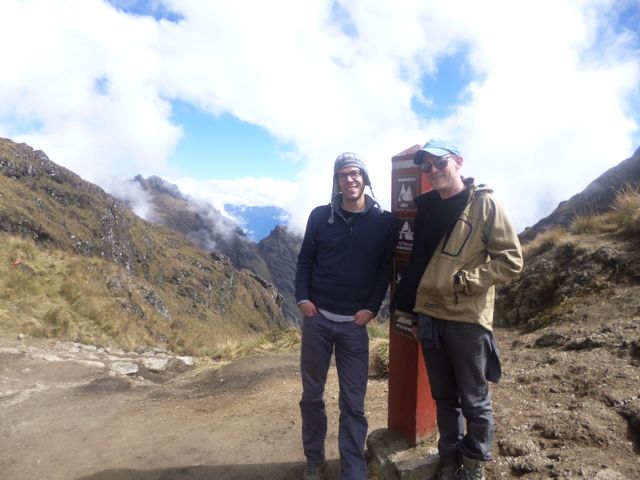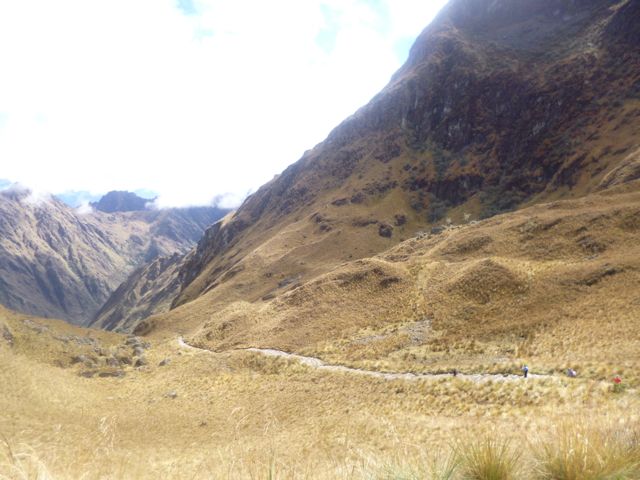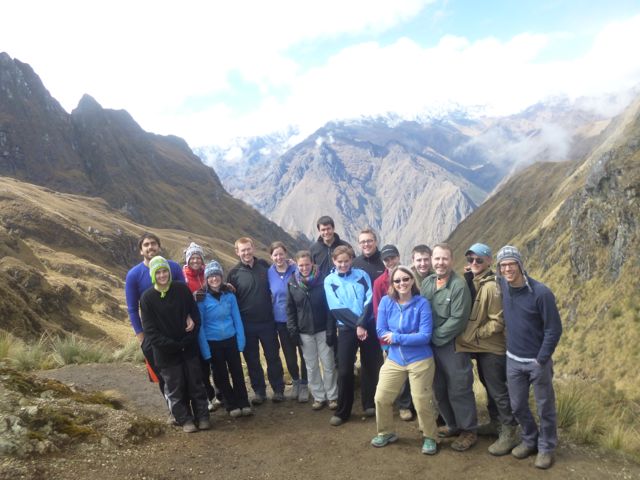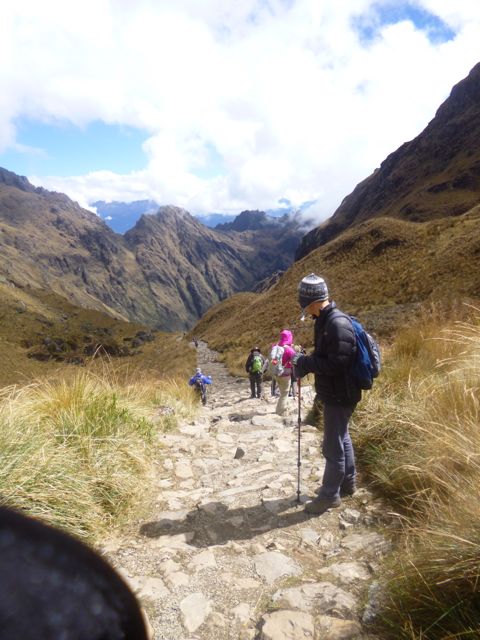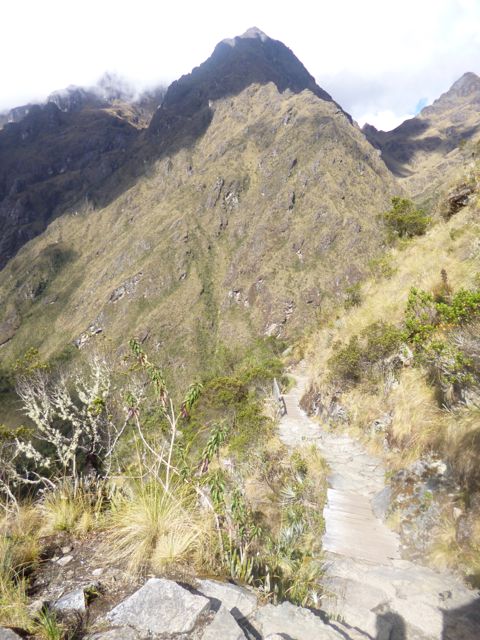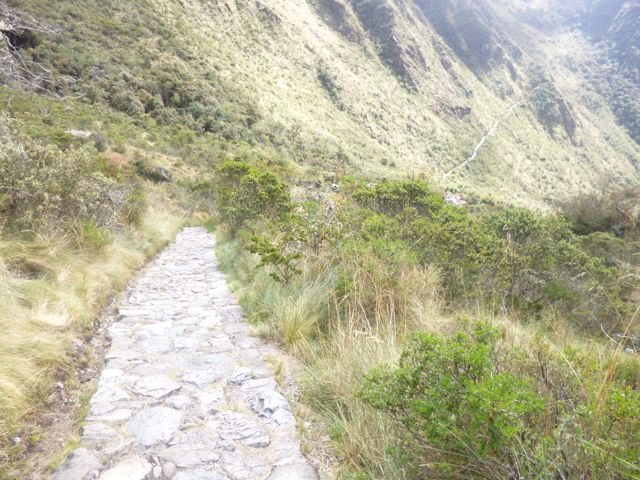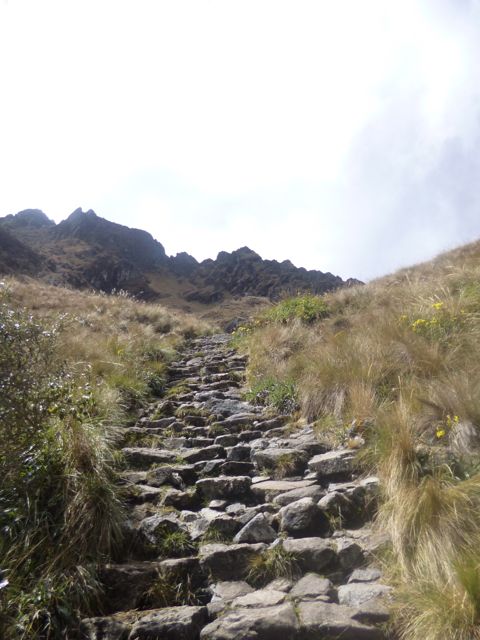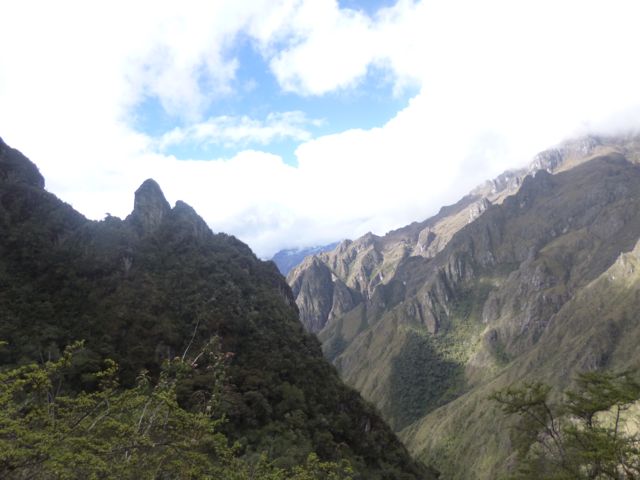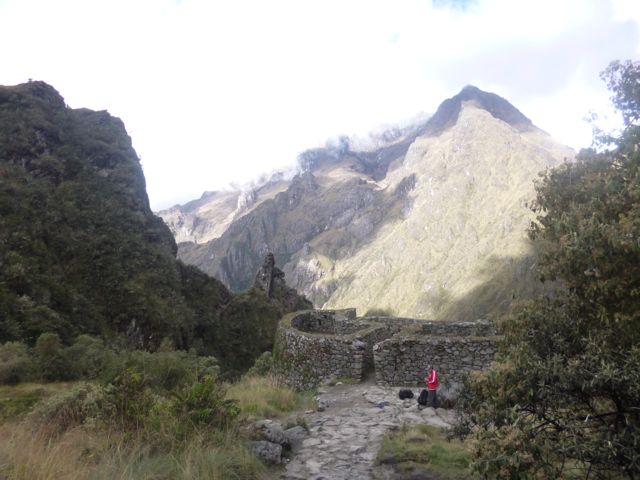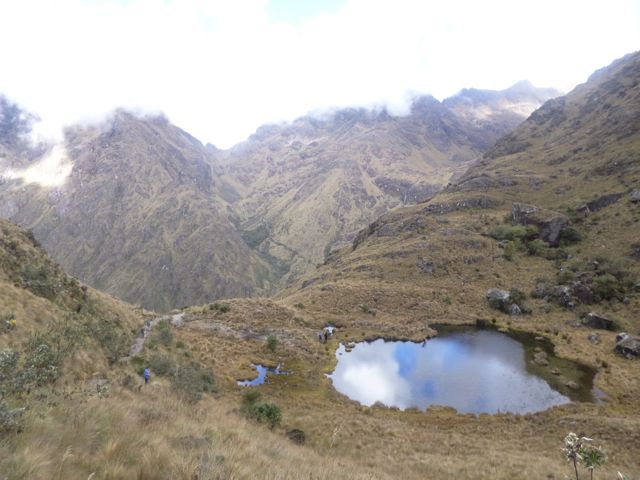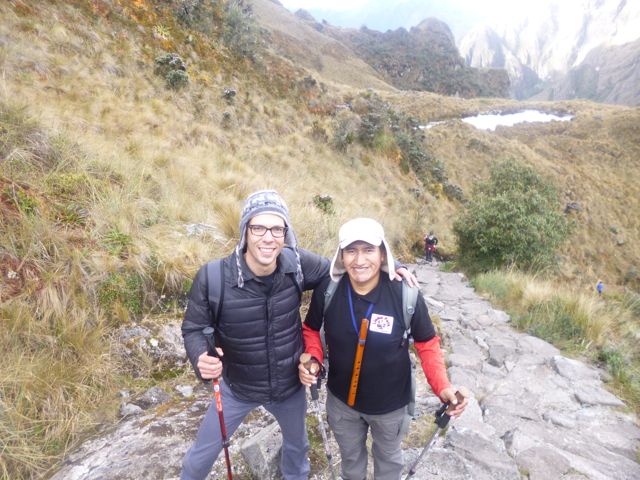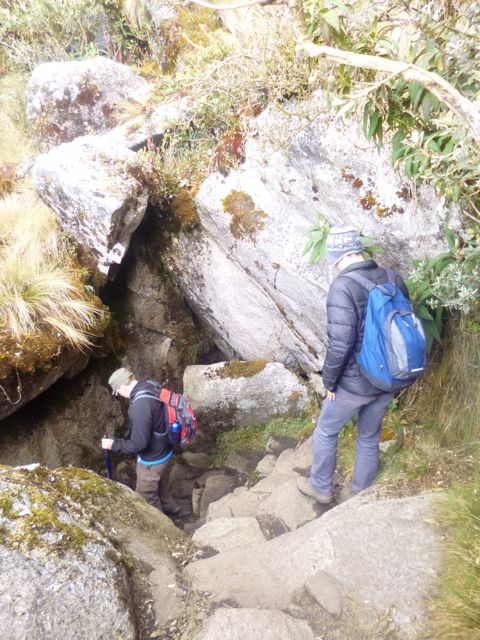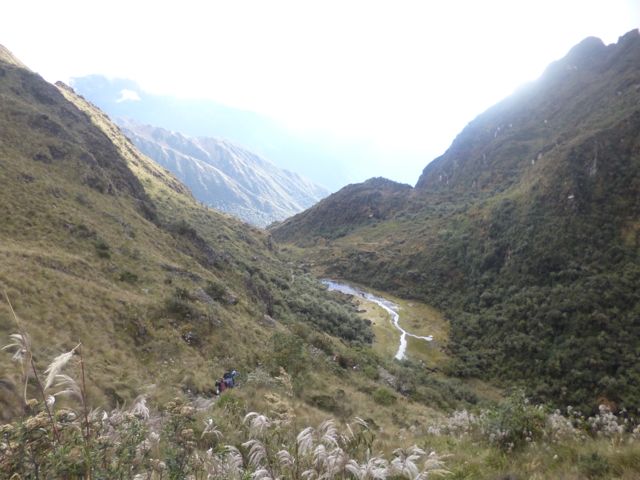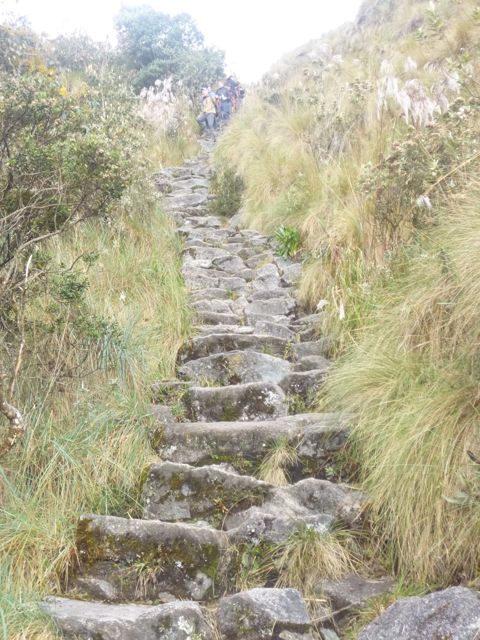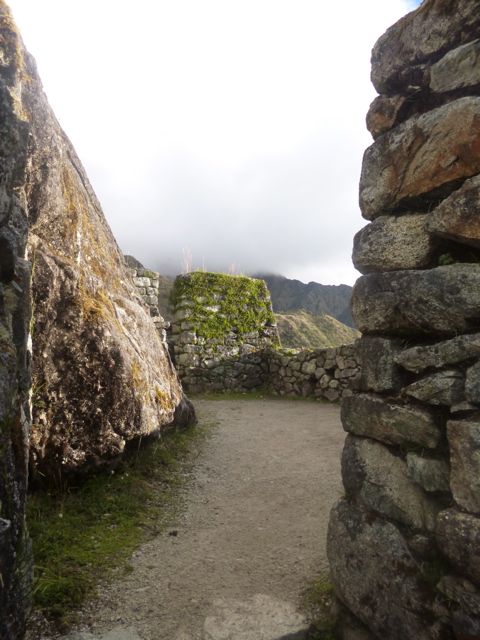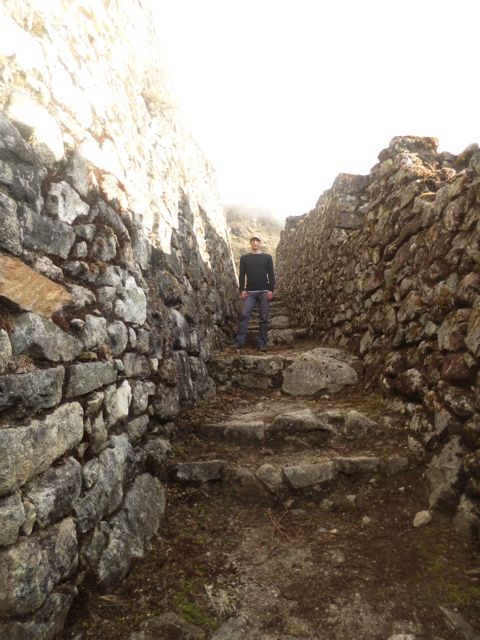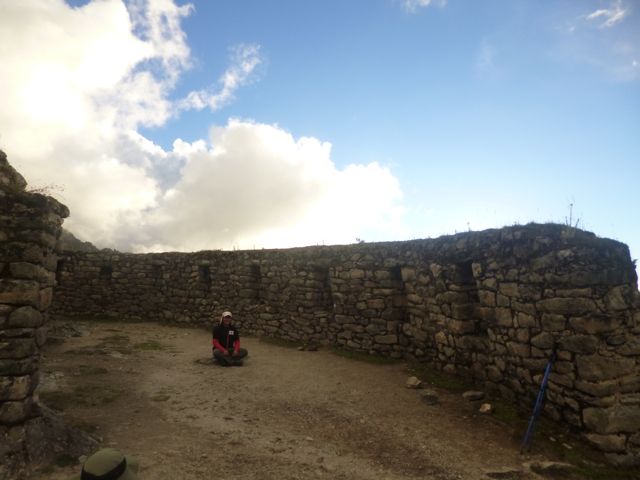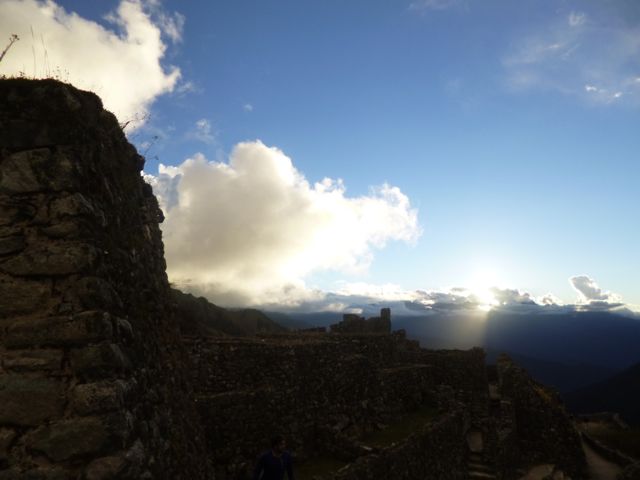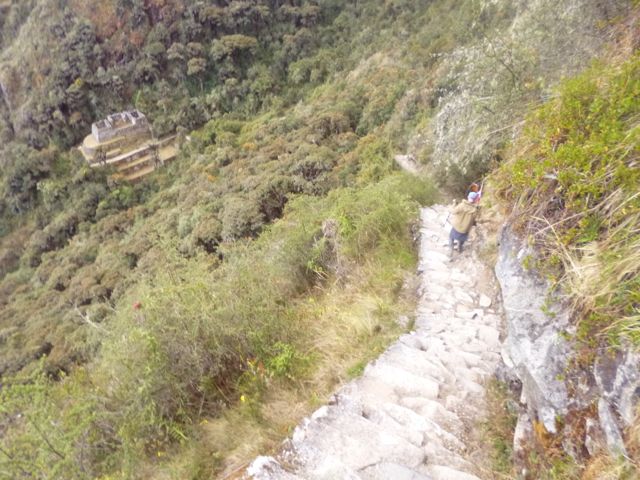This is known as the hardest day of the classic four-day trek, because you navigate two high-altitude mountain passes and hike for a total of about 10 hours. But we woke at a relatively leisurely 5:30 a.m. After breakfast, the sun was just starting to rise.
As we ascended to Dead Woman’s Pass, the highest point on the trail, the breath felt shallow in my chest — but nothing too alarming. Like most of the other hikers, I ate coca candy or chewed coca leaves as a precaution against headaches. (My favorite type of coca candy, by the way, is the chewy “toffees” that taste kind of like Tootsie Rolls.) I’m not sure if the coca really helps, but it provides a kind of a comfort.
The biggest challenge, for me, was to give myself permission to stop and take in the stunning scenery around me, rather than powering through. Sometimes I handle my life that way: Powering through. And I could see that there were other people in our group who were regarding as something to be conquered, which made it even more challenging for me not to follow suit. But I knew that wasn’t what I needed or wanted. I wanted to savor.
It’s fascinating seeing how different people “want” different things from this experience. Some do want to power through as quickly as possible. Others are happy to bring up the rear and simply to survive. Others want to learn about the history, or experience the spirituality of the trek. It’s challenging to let your motivations be what they are, without either adopting someone else’s out of sense of competition, or judging someone else’s out of a sense of superiority.
As I passed the tree line, hiking mostly alone now, the silence seemed to press against my ears. All I could hear was the very distant rush of the river miles below, and the occasional bird. The world felt uninhabited here, forsaken by most forms of life. I wanted to absorb that deep sense of quiet so that I could come back to it again when I needed it.
The paving was now almost entirely original Inca paving. As I neared Dead Woman’s Pass, the sun started to break through the clouds like a reward, an encouragement, a bit of figurative coca candy.
Porters from our company and others passed, motoring up the hillside with Quechua music playing from portable walkmen in their packs. I loved the sound of some of this music. It was sharp and irregular, almost nonwestern in its tonality, but beautiful too. In other words, exactly fitting to the scenery.
As the sun continued to shine, I felt simply… happy. This might have been partly chemical, some combination of the coca candy and the sun and the lack of oxygen. But I think it also came from a deep gratefulness at realizing how lucky I was to be here, healthy and free enough to have this experience.
When I reached Dead Woman’s Pass, I felt high enough in the air to be a part of the atmosphere instead of the usual feeling of just existing below it. Up this high, you’re breathing not air but clouds. Trails of vapor drifted across me and the other hikers who’d already arrived.
On the nearby peaks — amazingly, there’s still higher you could go — there’s snow from the chilly night before.
There’s little looking up to do. Mostly, it’s looking down.
By the way, the reason it’s called Dead Woman’s Pass isn’t apparent until much later this day, when you can look back and see the the outline of a woman lying on her back in the shape of the mountain peaks. No, there was no woman who died there. (Or at least, that’s not the reason for the name!)
This was the first time on the trail we encountered a significant number of other hikers, because there’s a bottleneck of people taking breaks to get pictures, etc. (The government allows 500 people a day to commence the trail, but it’s a long enough trek that a lot of spreading out occurs.) Our group got the obligatory collective shot as well.
Then we gave up much of the altitude we’d just gained by… hiking back downhill. Coming down from this first pass, I’d never been in a landscape so simultaneously breathtaking and enveloping. I felt awed and held at once.
The world dried out, too, as we descended. It got hotter and sunnier, with the scent of crispy pine needles I associate with the Mediterranean, and everyone started peeling off layers. That’s another hallmark of the trail: You’re either freezing or boiling hot, with few in-betweens. Life started to return: Bumblebees, birds.
This steep downhill, of course, is more challenging in many ways than the uphill. Harder on the joints and feet because of the repeated impacts. We passed a guide who was bouncing on one foot, asking for help in Spanish. He’d twisted his ankle badly and it was the size of a small grapefruit. Casiano told him to wait, that one of our porters had first-aid equipment to help treat the injury, but he didn’t want to stop. He hiked on, disappearing down some steep steps. Sure, the weight they carry is regulated, but it’s still a tough life for these guys — just as it was for chaskis, the young Inca messengers who constantly ran these trails, carrying messages back and forth between settlements all day, every day.
I thought about my dad and how he’d done this trail five or so years before me, when he was around 60. Probably it was about the last year he could have: He’s had trouble with his hips and ankles since. It must have been an amazing sense of accomplishment and satisfaction he felt.
We had a big break, and a big meal, at lunch. I crashed a little, as did many of the other hikers: I’m not sure it makes a ton of sense to have such a long break, and so much food, in the middle of such a big day.
We began our second ascent, more staircases — only up this time instead of down. On the steep parts of the Inca Trail, you’re making a constant choice between either 1) moving or 2) looking. You can’t really do both at once, because you’ll lose your balance or your footing.
The views continued to be stunning.
We reached an Inca watchtower site. These are outposts along the trail from which soldiers could look out for possible invaders.
We saw some of the small lakes from which pilgrims and chaskis would have drawn water.
Casiano, our guide, and me. He says he’s famous on the Internet from having his picture taken so often with hikers.
After reaching and descending from the second pass, which doesn’t have a name, we started to descend again — sometimes through caves!
Stairs were sometimes very narrow.
As late afternoon came on, we reached what became one of the absolute highlights of the trek for me: Sayaqmarka, which translates as “inaccessible place.” (You can see it in the background below.)
Indeed it was inaccessible, perched as it was at the top of a terrifying flight of a stairs that hugged a rocky outcrop. But to wander around this ancient and abandoned place, as early evening fell: I just wanted to keep gathering more and more of the experience.
Here’s me on one of the narrow streets, looking like I’m posing for a heavy-metal album cover.
Casiano broke out his flute right after I took this photo.
I think we all fall under the spell of this place, losing track of time. Darkness started to fall quickly, and Casiano herded us out.
Seth later told me that descending the stairs back to the main trail were his most terrified moments of the whole trek. The drop-off over the edge is much sheerer than it looks here.
As we made our final 20-minute push to the campsite, it felt like it was about to be midnight, after having been broad daylight seemingly only a few minutes before.


